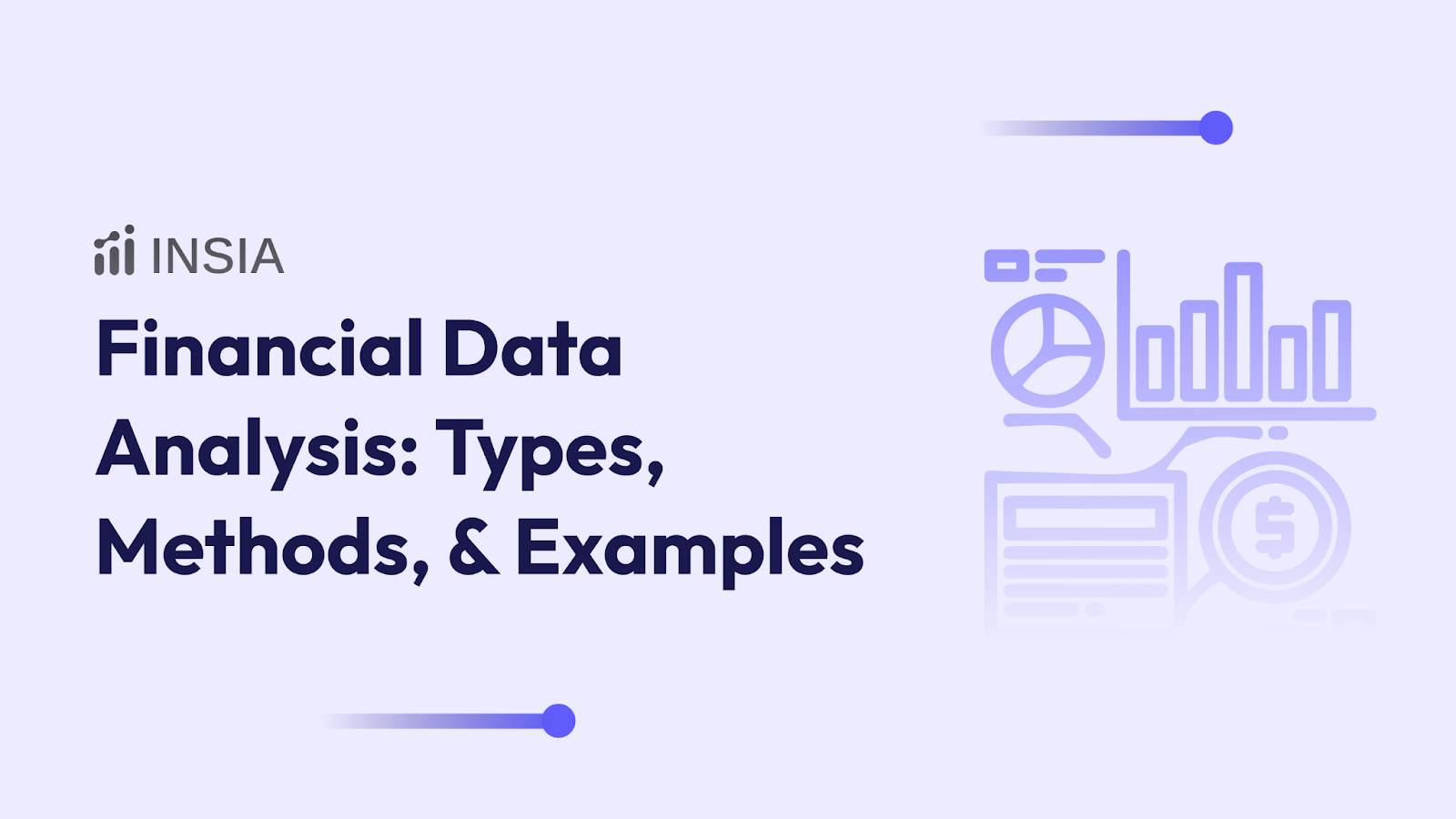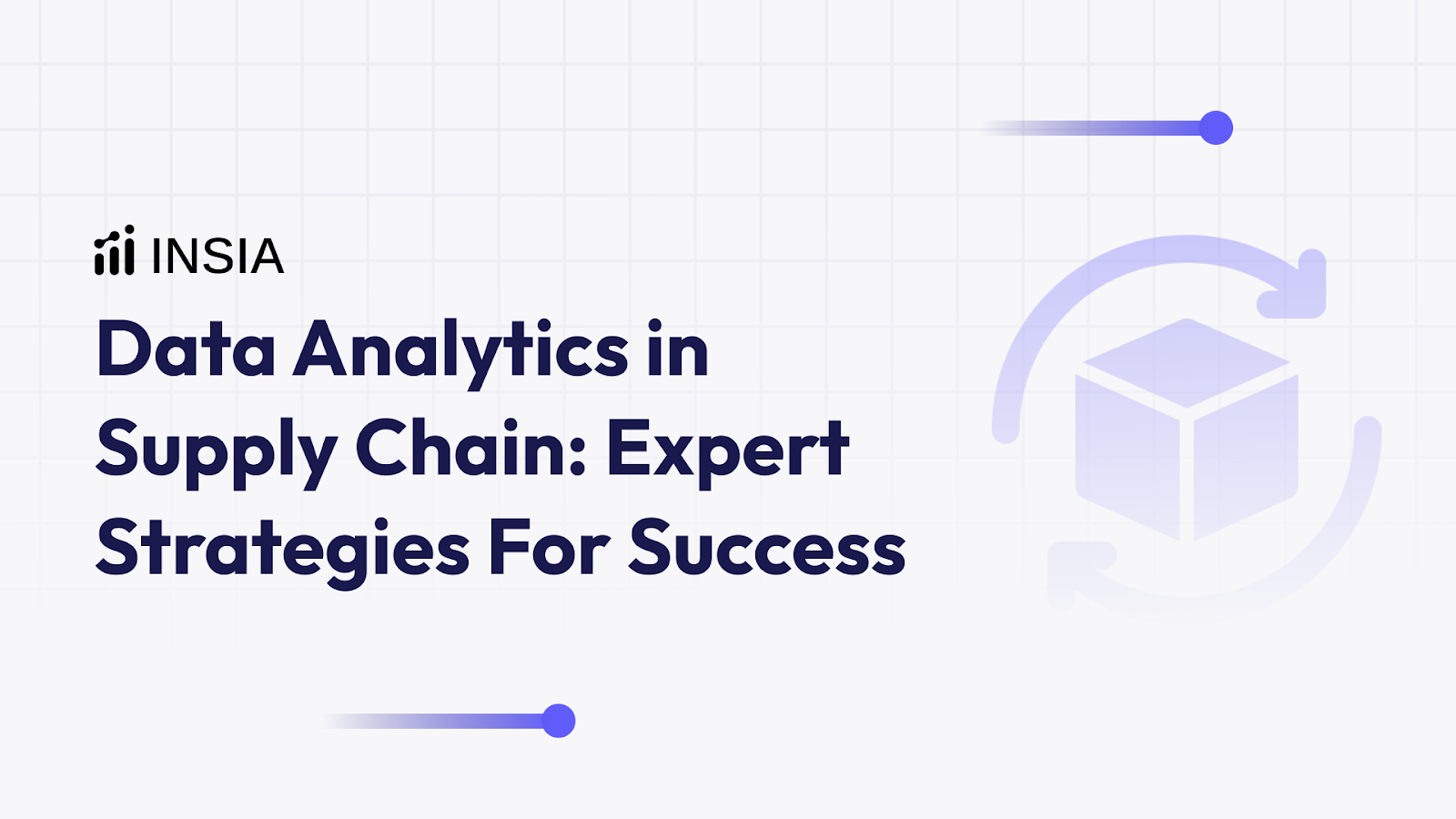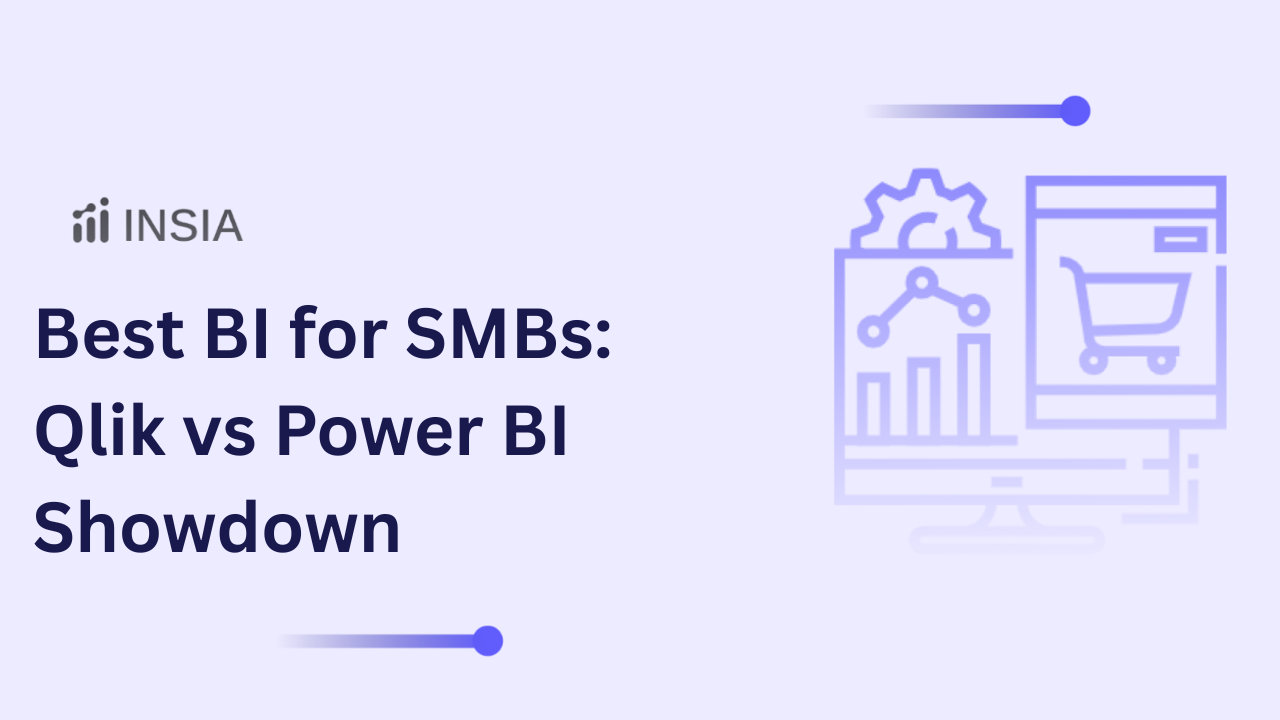TL;DR – Key Takeaways
- By 2025, AI adoption in procurement is expected to become the norm across mid to large enterprises.
- AI tools automate tasks like invoice matching, purchase order creation, and supplier performance tracking.
- Platforms like INSIA unify data from ERPs, spreadsheets, and procurement tools to deliver actionable insights.
- AI technologies—ML, NLP, and RPA—analyze data, detect risks, forecast demand, and streamline contract management.
- Case study: A healthcare company cut evaluation time by hundreds of hours using AI-based supplier profiling.
- Key features:
- Predictive analytics for demand and pricing
- Automated contract and invoice processing
- Supplier performance analysis with risk alerts
- NLP-powered chatbots and contract scanning
- Core benefits:
- Faster procurement cycles
- Lower operational costs
- Better compliance and risk mitigation
- Enhanced accuracy and fewer manual errors
- 5 key applications covered: Spend analytics, supplier management, contract reviews, demand forecasting, and risk detection.
- Step-by-step automation roadmap shared—from data entry to strategic AI integration.
- AI in procurement debunks myths: it supports—not replaces—human expertise, and suits businesses of all sizes.
- INSIA vs. traditional methods: offers faster decisions, smarter vendor selection, better spend control, and compliance (GDPR, HIPAA).
Imagine you're a procurement manager on the brink of finalizing a major supplier contract, and the data you're working with is incomplete or outdated. Every decision you make has the potential to impact your company's bottom line significantly, yet you're grappling with scattered information and manual processes.
Navigating such complexities demands more than experience and intuition—leveraging technology to transform fragmented data into actionable insights. That's where AI in procurement steps in, offering a smarter, more efficient approach to managing procurement processes.
Use of AI in Procurement:
Have you been tracking the influence of artificial intelligence on procurement all over the USA market? It is remarkable.
In a global survey from 2023, procurement decision-makers revealed that AI is becoming a key player in their operations. A striking 67% of respondents said they rely on AI primarily for spend analytics, while 62% use it to streamline contract lifecycle management. Around 27% reported that AI opens up fresh opportunities in e-procurement, signalling that technology is transforming how businesses handle purchasing decisions.
From sophisticated algorithms that process complex purchase data to cutting-edge applications that forecast spending trends, artificial intelligence is reshaping the procurement landscape. This transformative technology is not just optimizing processes; it's fundamentally redefining procurement strategy.
1. Solving Complex Procurement Problems
AI for procurement technology employs advanced algorithms to tackle intricate challenges. It automates data collection and analysis from multiple sources, allowing procurement professionals to make decisions based on comprehensive, real-time data.
These algorithms can analyze supplier performance, predict future demand, and optimize purchasing strategies, ensuring that businesses are proactive in their procurement approach.
2. Enhanced Decision-Making and Operational Efficiencies
Artificial intelligence in procurement has evolved from simple process automation to advanced decision-support systems. Today, AI in procurement can provide predictive analytics to foresee price fluctuations, identify supply chain risks, and suggest the best time to purchase.
Procurement AI tools help maintain compliance and control over spending and foster more strategic supplier relationships through better negotiated terms and faster communication. The table below shows recent applications of procurement AI tools.
As AI in procurement continues to advance, professionals must understand these distinctions to leverage the technology effectively and drive innovation in their procurement practices. Now, let's see exactly how these AI innovations are transforming procurement as we know it.
Transformations Brought by AI in Procurement:
While the concept of AI in procurement may sound futuristic, its practical applications are already delivering significant benefits. However, many organizations still struggle to understand how artificial intelligence and procurement can effectively integrate into their workflows.
1. Automates Time-Consuming Procurement Tasks and Offers Data Insights
Procurement teams often get bogged down by routine tasks—like data entry, tracking purchase orders, and contract adherance—that consume valuable time and resources.
Imagine you're a procurement manager juggling multiple supplier contracts and countless purchase orders. The manual process of cross-referencing vendors, evaluating risk, and ensuring compliance can be overwhelming.
With AI procurement software, these tasks become automated. AI quickly sifts through large datasets, providing clear, actionable insights. This speeds up the procurement cycle and ensures more accurate and data-driven decisions.
2. AI as a Tool to Augment Human Capabilities Rather Than Replace Them
There is a common misconception that AI will replace human jobs. In reality, AI in procurement is designed to complement and augment human capabilities, not replace them. It takes over repetitive, low-value tasks and provides insights that empower professionals to make better, more strategic decisions.
Instead of replacing your expertise, AI acts as an intelligent assistant. It can consolidate and analyze vast amounts of data, providing real-time insights that enhance your decision-making ability. This allows you to focus on negotiations, relationship management, and other critical areas where human expertise is irreplaceable.
3. Common Misconceptions about AI and Its Realistic Applications
Despite the proven benefits of AI in procurement, many misconceptions persist. Some believe AI is a 'magic bullet' that can instantly solve all procurement challenges, while others fear it is too complex or costly to implement.
Let’s address 3 most common misconceptions regarding AI in procurement:
Types of AI in Procurement:

AI in procurement is not a one-size-fits-all solution. Different AI technologies serve various purposes, each offering unique benefits to enhance the procurement process.
Let's dive into the three most impactful types of AI in procurement:
- Machine Learning (ML)
- Natural Language Processing (NLP)
- Robotic Process Automation (RPA)
1. Machine Learning (ML): Analyzing Historical Data to Predict Patterns
Think of Machine Learning as your procurement department's very own fortune teller. It's like having a super-smart intern who never sleeps, constantly poring over your historical data to spot patterns.
Machine Learning, a subset of AI, uses algorithms to analyze historical procurement data and identify patterns that can inform future purchasing decisions. Learning from past transactions, ML tools can accurately predict supplier performance, demand fluctuations, and pricing trends.
2. Natural Language Processing (NLP): Interpreting Human Language for Contract Analysis and Chatbot Functionalities
Ever wished you had a translator for "legalese"? That's where Natural Language Processing comes in. It's the AI equivalent of a polyglot, a contracts expert. NLP can zoom through complex documents, flagging important clauses faster than you can say "fine print."
Additionally, NLP-powered chatbots can respond instantly to procurement queries, improving communication and speeding up decision-making.
3. Robotic Process Automation (RPA): Automating Repetitive, Rule-Based Tasks
Picture a robot that's good at paperwork - that's RPA. These digital workers tackle all those mind-numbing, repetitive tasks that make procurement teams want to pull their hair out.
From data entry to invoice matching, RPA tools are like having an army of super-efficient assistants who never need coffee breaks. RPA tools mimic human actions and can be programmed to execute tasks quickly and accurately, 24/7, without fatigue or error.
Key Applications of AI in Procurement:
Understanding how AI can be practically applied to procurement processes is essential for any organization looking to stay competitive. From optimizing costs to managing risks, AI in procurement offers a range of powerful tools to transform daily operations.

Let's dive into the key areas where AI is making a significant impact.
1. Spend Analytics: Gain Insights for Cost Optimization
Imagine trying to analyze hundreds of purchase orders to identify cost-saving opportunities manually. Procurement artificial intelligence does this in seconds, highlighting trends and discrepancies that might go unnoticed.
2. Supplier Selection and Management: Automate Profiling and Evaluation
Selecting the right suppliers is crucial but can be time-consuming and prone to human error. AI in procurement automates supplier profiling and evaluation by analyzing vast datasets, including historical performance, financial stability, and compliance records.
3. Contract Management: Streamlining and Automating Contract Reviews
Contracts are the backbone of procurement, but managing them can be daunting. Think of the hours spent going through contract clauses—AI procurement tools can automate these reviews, ensuring compliance and reducing legal risks.
4. Demand Forecasting: Predict Future Needs for Better Inventory Management
AI in procurement enhances demand forecasting by analyzing historical data, market trends, and external factors to predict future inventory needs accurately.
Consider the challenges of stocking too much or too little raw material—AI forecasts demand accurately, minimizing stockouts or overstock situations.
5. Risk Management: Assess Hazards and Detect Potential Fraud
Imagine manually assessing supplier risks—AI can analyze multiple risk factors in real time, providing early warnings and actionable insights. This proactive approach reduces exposure to risks and enhances the overall resilience of the procurement process.
Enough theory, let's break down the nitty-gritty of how you can actually start automating your procurement workflows.
Automation of Procurement Processes:
You know how everyone's talking about digital transformation? Well, in procurement, it's all about automation. Companies should move step-by-step towards automation, using AI to reduce manual work and boost efficiency.
1. Outlining a Phased Approach to Automate Various Procurement Tasks
So, how do you go about automating procurement? It's not like flipping a switch - you've got to be strategic.
- Phase 1: Automating smaller tasks such as data entry and purchase order processing.
- Phase 2: Move towards more advanced automation, like contract analysis and supplier performance monitoring.
- Phase 3: Finally, integrate AI-driven analytics to forecast demand, manage risks, and support strategic decision-making.
2. Focus on Tasks Such as Purchase Order Processing and Invoice categorization Analysis
Speaking of leveling up, let's zoom in on those purchase orders and contracts. Tasks like purchase order processing and invoice categorization are ripe for automation. These are often time-consuming, prone to errors, and involve repetitive workflows that can easily be streamlined using AI in procurement.
3. Leveraging AI to Minimize Manual Intervention and Increase Efficiency
By handling everything from data collection to analysis, AI procurement tools allow professionals to focus on strategic decision-making rather than tedious tasks.
- Reduces human error by automatically processing large volumes of data.
- Enhances speed and accuracy in decision-making.
- Use your employees for more value-added activities.
Benefits of AI in Procurement:
The benefits of using AI in procurement extend beyond automation. Let's look at how AI makes procurement smarter and more efficient, from cost savings to improved security.
1. Enhanced Efficiency: Streamlines Workflows and Automates Repetitive Tasks
AI in procurement streamlines workflows by automating repetitive tasks like invoice matching, purchase requisition approvals, and invoice categorization. .
Businesses can expect:
- Quicker turnaround times
- Fewer bottlenecks
- A more agile procurement process
2. Cost Savings: Reduces Processing Costs and Improves Strategic Planning
AI-powered tools can identify cost-saving opportunities by analyzing procurement spending patterns and recommending optimal purchasing strategies.
Benefits include:
- Lower cost of purchase.
- Better financial management
3. Improved Quality: Maintains Consistent Standards and Minimizes Errors
AI in procurement ensures consistency by maintaining standardized processes and reducing human error through automation.
Companies will notice:
- Higher accuracy rates
- Fewer discrepancies
- Improved overall quality in procurement operations
4. Enhanced Security: Supports Supplier Selection and Legal Protections
AI tools help mitigate risks by providing insights into supplier performance, financial stability, and regulation compliance.
Results include:
- Strengthened supplier relationships
- Reduced legal risks
5. Increased Competitiveness: Fosters Innovation and Improves Operational Efficiency
AI fosters innovation by enabling businesses to be more agile, responsive, and competitive.
Your company will gain:
- A more competitive position in the industry
- Will be driven by efficient and effective procurement practices
Of course, no great innovation comes without its hurdles—let’s tackle the challenges you might face.
Challenges of AI in Procurement:
While the benefits are compelling, there are also challenges to consider when implementing AI in procurement.
1. Data Quality: Importance of Clean and Well-Governed Data
AI is only as effective as the data it processes. Inaccurate insights and poor decision-making might result from flawed data.
- Solution: Invest in data cleaning and governance practices to ensure AI tools have reliable data to work with.
2. Change Management: Managing Cultural Shifts and Resistance
Introducing AI in procurement often requires significant cultural changes, which can face resistance from employees accustomed to traditional methods.
- Solution: Develop a robust change management strategy that includes training, communication, and engagement initiatives.
3. Integration: Ensuring Seamless Integration with Existing Systems
AI tools must be compatible with existing procurement systems to function effectively. Integration challenges can hinder AI adoption.
- Solution: Choose AI solutions offering seamless integration and work closely with IT teams to address compatibility issues.
4. Skills and Expertise: Necessity for Training and Upskilling Procurement Teams
To fully leverage AI in procurement, teams must be trained and upskilled to work effectively with new technologies.
- Solution: Invest in continuous learning and development programs to build internal expertise in AI technologies.
Alright, let’s bring it all together and see how AI can truly revolutionize your procurement strategy.
Conclusion:
Leveraging AI in procurement can dramatically improve company performance by optimizing processes, reducing costs, and enhancing decision-making. However, successful implementation relies on clear communication and understanding of AI capabilities. Embrace the future of procurement with AI to unlock your organization's full potential.
INSIA simplifies the integration of AI in procurement by -
- Bringing data together from different procurement sources such as Ariba, Spreadsheets, ERPs,Google Sheets, Databases, etc
- Cleaning and integrating it logically
- Analyzing it through an intuitive Google-like search bar.
It helps organizations enhance their procurement by providing actionable insights on spending, vendor performance, PR (Purchase Request) to PO (Purchase Order) process performance, vendor optimization, and end-to-end procurement process monitoring. This empowers them to streamline the procurement process and quickly make smarter informed decisions.
Frequently Asked Questions (FAQs)
1. What is AI in procurement and how does it improve decision-making?
AI in procurement is like having a super-powered assistant that helps you make smarter decisions. It looks through tons of data, spots patterns, and suggests ways to save money or improve operations. With AI, you can make quicker, more accurate decisions based on real-time insights.
2. How can AI help automate time-consuming procurement tasks?
AI can handle all the boring, repetitive tasks like entering data, matching invoices, and checking contracts. This means you don’t have to waste time on manual work and can focus on the important stuff, like negotiating with suppliers.
3. What are the key benefits of using AI in procurement?
AI brings a lot of great things to procurement:
- Saves you money by finding better ways to spend.
- Improves accuracy with data-driven decisions.
- Keeps things secure by monitoring suppliers closely.
- Gives you a competitive edge by making processes faster and smoother.
4. How does AI improve supplier management?
AI helps you choose the right suppliers by looking at their past performance, reliability, and any potential risks. It can even flag any red flags early on, so you can address problems before they become major issues.
5. Can AI in procurement help with demand forecasting?
Yes, absolutely! AI can predict what you'll need in the future by analyzing past buying patterns and trends. This helps you avoid having too much or too little inventory, making sure you have just the right amount at the right time.
6. What are some misconceptions about AI in procurement?
A few myths about AI in procurement are:
- “AI will replace human decision-making”: AI helps, but humans are still needed to make the final call.
- “AI is only for big companies”: Small businesses can use AI too, and it’s more affordable than ever.
- “It’s an all-or-nothing thing”: You don’t need to go all in at once. You can start small and build up over time.
7. How can AI tools improve operational efficiency in procurement?
AI speeds up procurement by automating the tedious stuff, like invoice matching and tracking supplier performance. This means your team spends less time on admin and more time on the important tasks that drive value, like working with suppliers.
8. What challenges might businesses face when implementing AI in procurement?
Some common challenges include:
- Bad data: If your data is messy, AI won’t work well.
- Resistance to change: Not everyone loves new technology, so you may face pushback.
- Tech integration: AI needs to work with your current systems, which can take some time.
- Training: Your team will need to learn how to use AI tools effectively.
9. How does machine learning improve procurement practices?
Machine learning is like a crystal ball for procurement. It looks at past data and predicts future trends, helping with things like supplier selection, pricing, and demand forecasting. Basically, it helps you make more informed, accurate decisions.
10. What role does Natural Language Processing (NLP) play in procurement?
NLP is like a super-efficient reader and communicator. It can scan and analyze contracts quickly, picking out important info and potential risks. It also powers chatbots that answer supplier questions, making communication faster and reducing manual work.



.png)






.png)





